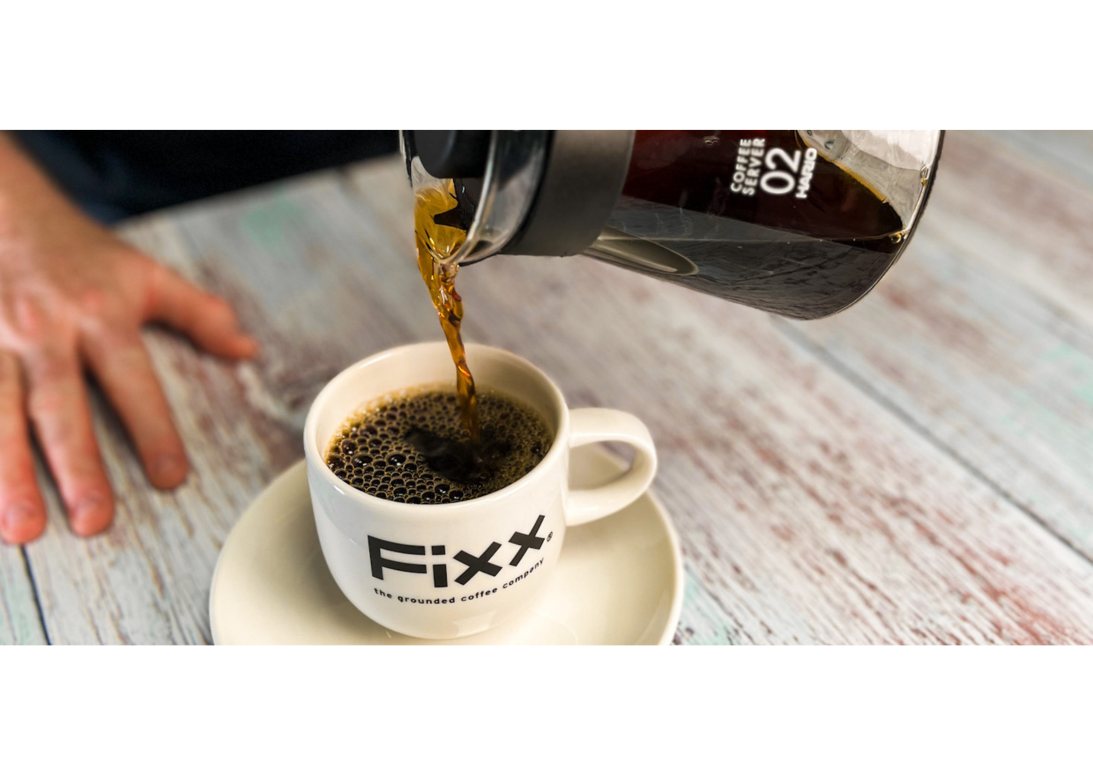Extraction
What is Coffee Extraction?
In the world of coffee, when people talk about extraction, they are referring to the process of dissolving and extracting the soluble compounds from coffee grounds using hot water. Basically, it is how the flavours, aromas, and other desirable elements in coffee are transferred from the coffee grounds to the liquid to create a brewed cup of coffee. Extraction is a fundamental concept in the world of coffee preparation. It is a critical factor in determining the taste and quality of the final cup of coffee.
More often than not, if you've made a cup of coffee and something doesn't taste right, chances are it means something has gone wrong during the extraction process. An off-tasting coffee can be described as over-extracted or under-extracted, with both having different negative taste profiles. Achieving the perfect coffee extraction requires a combination of skill, knowledge, and experimentation to create a cup of coffee that suits one's personal taste preferences.
What Are the Four Main Factors Influencing Coffee Extraction?
1. Time
The amount of time that coffee grounds are in contact with hot water directly affects the extraction process, and finding the proper extraction time is essential for achieving a balanced and delicious cup of coffee. The correct extraction time will depend on the brewing method used. An Espresso can be brewed in 30 seconds, whereas a French Press can take at least four minutes. The reason for this difference comes down to the next point. Grind size.
2. Grind Size
Finer grinds (Espresso) have a larger surface area and extract more quickly, while coarser grinds (French Press) require more extraction time. Adjusting the grind size can control the extraction time in methods like Espresso. How finely or coarsely the coffee is ground will depend on how long it should be in contact with water. Which brings us to our next point. Ratios.
3. Coffee-to-Water Ratio
The coffee-to-water ratio, combined with grind size, significantly influences coffee extraction. A finer grind requires a lower coffee-to-water ratio since the increased surface area allows for faster extraction (i.e. Espresso). In comparison, a coarser grind necessitates a higher water ratio due to slower extraction (i.e. French Press). It's essential to strike the perfect balance between grind size and ratio. Using too much coffee with a fine grind can result in over-extraction, leading to bitterness. On the other hand, using too little coffee with a coarse grind can cause under-extraction, resulting in a sour brew.
4. Temperature
Temperature plays a critical role in the coffee extraction process, influencing the flavour, aroma, and overall quality of the final cup. Different compounds in coffee beans have varying solubility levels at different temperatures. Hot water is essential for dissolving and extracting soluble compounds from coffee grounds, such as acids, sugars, and flavour compounds.
Cold water is less effective at extracting these compounds, especially oils and acids. Because cold brew is brewed at a lower temperature, it requires a longer steeping time to achieve adequate extraction. This extended steeping allows the coffee to extract flavours gradually. As a result, cold brew tends to have a different flavour profile than hot-brewed coffee and is often described as smoother, less acidic, less bitter and naturally sweeter.
How Do Different Brewing Methods Affect Coffee Extraction?
Different coffee brewing methods indeed have a significant impact on coffee extraction. Here's an overview of how various methods affect the extraction process:
Espresso:
Espresso is a concentrated coffee brewing method with a high-pressure extraction process. It involves finely ground coffee beans and a relatively short brew time (around 25-30 seconds). The high-pressure extracts a rich, intense flavour with a layer of crema on top.
Drip Brewing (Automatic Coffee Maker):
Automatic drip coffee makers are popular for their convenience. They use a medium grind and hot water, typically in the range of 90°C to 96°C (195°F to 205°F). The water flows through a paper or metal filter and the coffee grounds, extracting a balanced and clean flavour.
French Press:
French press brewing uses coarsely ground coffee steeped in hot water for an extended period (usually 4-10 minutes). The metal or mesh filter allows more oils and fine particles to pass through, resulting in a full-bodied brew with a rich flavour and mouthfeel.
Pour-over:
Pour-over methods like the Hario V60 or Chemex involve manually pouring hot water over coffee grounds in a controlled manner. The brew time and water flow rate are adjustable depending on how fine or coarse you grind your coffee. This allows for precise extraction control. This method tends to bring out the nuanced flavours of the coffee.
AeroPress:
The AeroPress is a versatile, portable method that uses air pressure to extract coffee. It combines elements of the French Press with Espresso and Pour-over methods. This gives the user a wide range of adjusting parameters, like grind size, brew time or temperature.
Stovetop (Moka Pot):
Stovetop coffee is made by pressurised hot water passing through finely ground coffee, which is placed in a filter basket within the Moka pot. Stovetop coffee typically has a bold and robust flavour profile with a rich, full body. The pressure extraction process enhances the extraction of oils and compounds from the coffee grounds, contributing to its unique taste, sometimes comparable to Espresso.
Cold Brew:
Cold brew is made by steeping coarse coffee grounds in cold or room temperature water for an extended period (12-24 hours). The cold extraction process produces a smooth, low-acid coffee concentrate that's typically diluted before serving over ice.
Each brewing method has unique characteristics, including grind size, water temperature, brewing time, and filter type, which collectively influence the final coffee's flavour, aroma, body, and strength. Coffee enthusiasts often experiment with these variables to tailor their coffee to their tastes.





